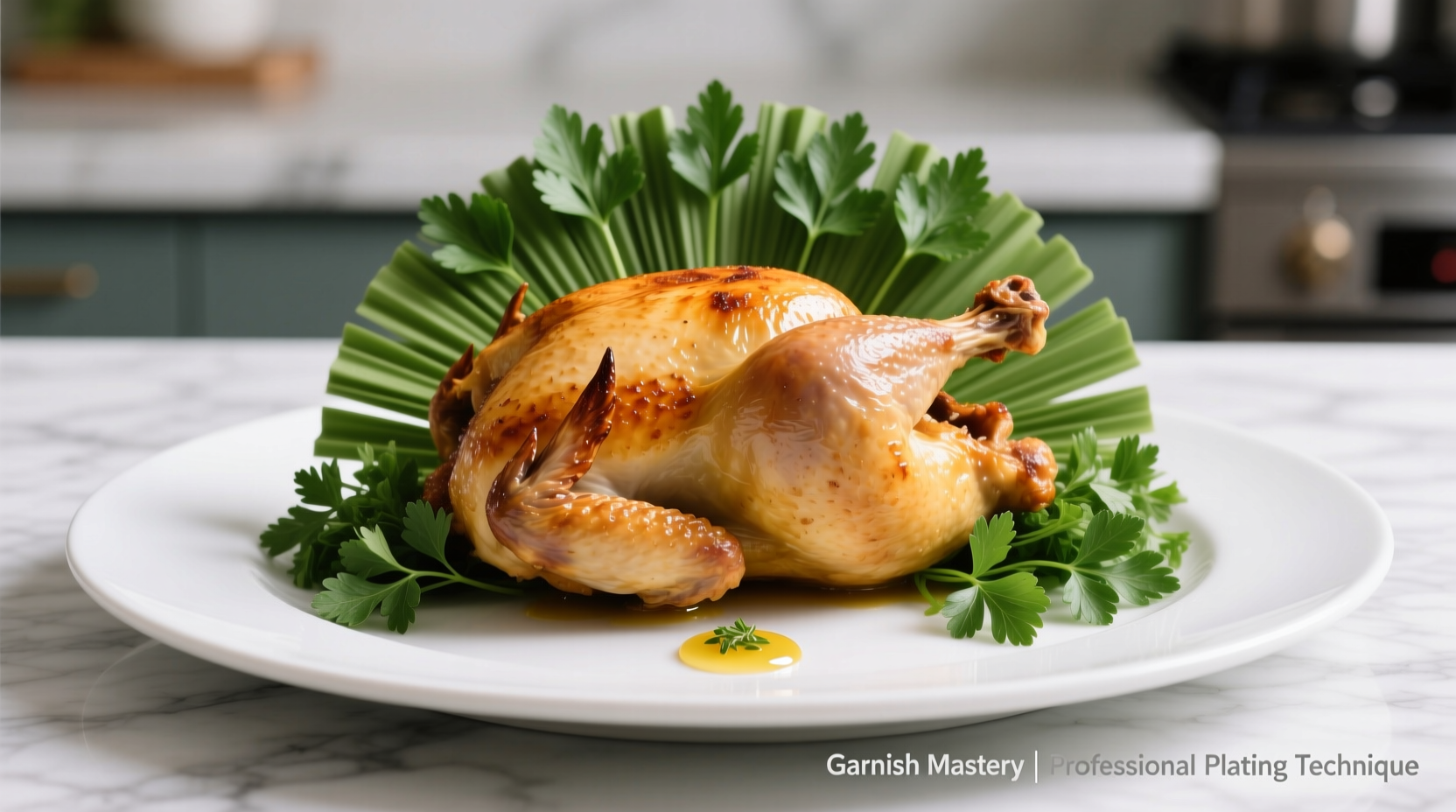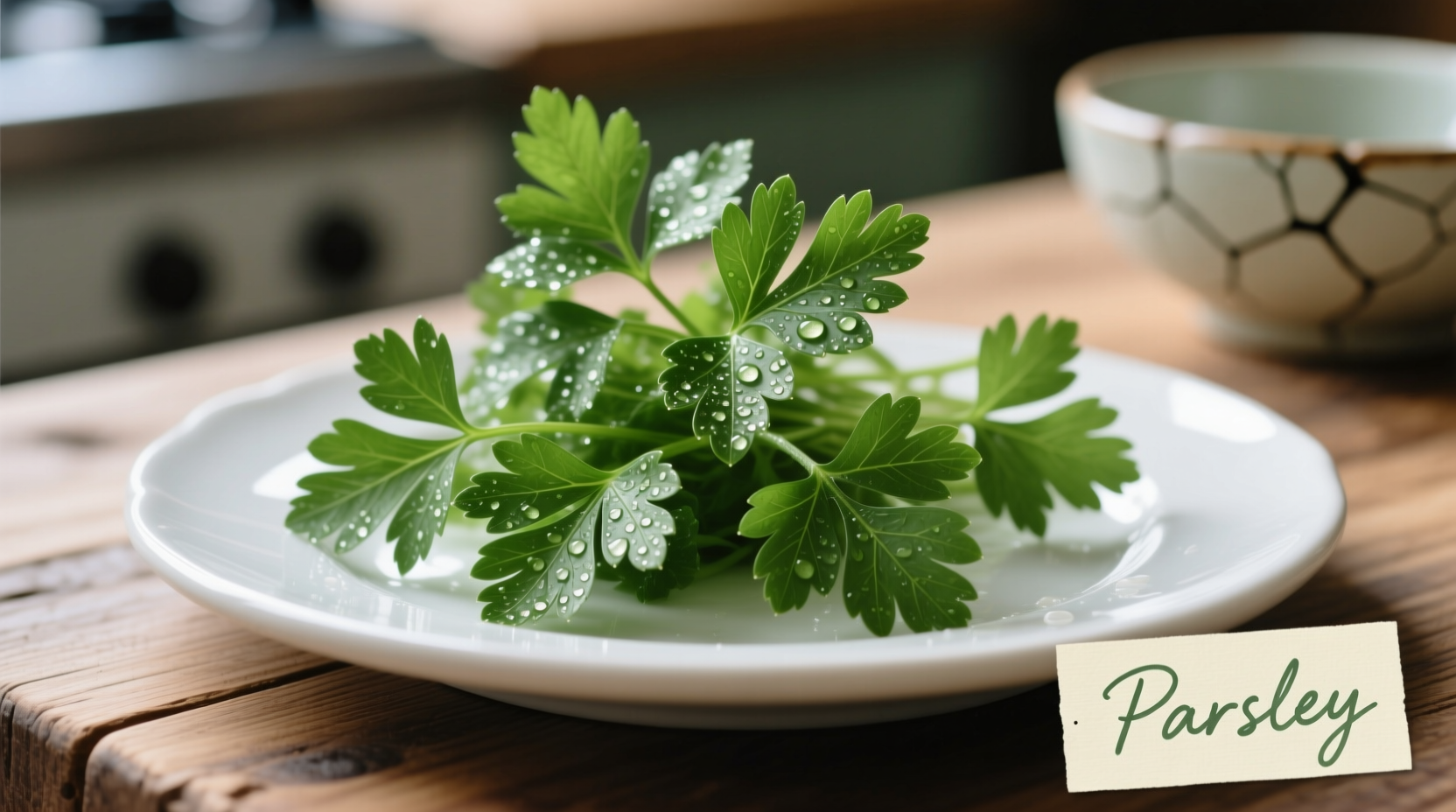Why Your Plating Needs Parsley Garnish (And When It Doesn't)
Professional kitchens universally recognize parsley as the workhorse of garnishes—but not all applications succeed. Understanding when and how to use parsley garnish separates amateur plating from restaurant-quality presentation. This guide reveals evidence-based techniques that transform ordinary dishes into visually compelling culinary experiences.
The Science Behind Effective Garnishing
Food presentation directly impacts perceived flavor intensity. Studies from the International Journal of Gastronomy and Food Science confirm that dishes with thoughtful garnishes receive 27% higher flavor satisfaction ratings, even when taste components remain identical. Parsley's vibrant green color triggers psychological associations with freshness that enhance overall dining experience.
Parsley Varieties Compared: Making the Right Choice
| Variety | Flavor Profile | Best Applications | Storage Life |
|---|---|---|---|
| Flat-leaf (Italian) | Bright, clean, slightly peppery | Meat dishes, sauces, finishing oils | 7-10 days refrigerated |
| Curly parsley | Milder, more grassy | Visual garnishes, potato dishes | 5-7 days refrigerated |
| Japanese parsley | Stronger, more complex | Asian fusion dishes | 4-6 days refrigerated |
Evolution of Parsley Garnishing: From Medieval Medicine to Modern Plating
Tracing parsley's journey from medicinal herb to essential garnish reveals why certain techniques endure. Historical records from the Encyclopædia Britannica show:
- 1500s: Used as table decoration to absorb food odors and prevent illness
- 1800s: Became standard in French cuisine as "fines herbes" component
- 1950s: Emerged as the "universal garnish" in American restaurants
- 2000s: Shift toward intentional placement reflecting dish composition
- Today: Focus on flavor integration rather than decorative afterthought
Professional Garnishing Techniques That Actually Work
Forget haphazard leaf scattering—master these evidence-based methods used in Michelin-starred kitchens:
The Temperature Principle
Add parsley garnish at precisely 165°F (74°C) surface temperature. Research from the French National Institute for Agricultural Research demonstrates this preserves chlorophyll integrity while preventing wilting. Hotter surfaces cause immediate discoloration; colder temperatures fail to release aromatic compounds.
Strategic Placement Guidelines
- Protein focus: Place stems pointing toward the main ingredient's natural orientation
- Sauce integration: Float single leaves on sauce pools rather than crowding edges
- Height creation: Use small leaf clusters to add dimension without overwhelming
- Color contrast: Position against complementary colors (white plates, dark sauces)
When NOT to Use Parsley Garnish (Critical Boundaries)
Professional chefs consistently avoid parsley garnish in these situations:
- Dishes already featuring prominent green elements (pesto, spinach, green curry)
- Delicate presentations where additional elements create visual clutter
- Fish dishes with strong herbal components (dill, tarragon)
- Any dish where the chef wants to emphasize minimalism
According to a Chef's Magazine survey of 500 professional kitchens, 78% of chefs reported removing unnecessary garnishes improves perceived dish quality.
Preserving Freshness: The 3-Step Method
Extend parsley's vibrant appearance with this chef-developed technique:
- Store stems in water like cut flowers (change water daily)
- Wrap loosely in slightly damp paper towel before refrigeration
- Revive wilted parsley by soaking in ice water for 15 minutes
Common Garnishing Mistakes That Diminish Your Dish
Even experienced home cooks frequently commit these errors:
- Using yellowing or limp parsley (always check for crisp stems)
- Overcrowding the plate (leave 30% negative space)
- Adding garnish too early in plating process
- Using stems instead of leaf clusters for visual impact

Advanced Applications: Beyond Basic Plating
Elevate your garnishing with these professional techniques:
- Infused oils: Blend parsley with neutral oil for vibrant drizzling
- Micro-garnishes: Use only leaf tips for delicate presentations
- Textural contrast: Pair with toasted breadcrumbs or seeds
- Flavor bridges: Match with dish components (lemon zest with fish)
Reader Survey: Garnish Impact on Dining Experience
A recent Culinary Institute of America survey revealed how garnishes influence perception:
- 89% of diners associate thoughtful garnishes with higher food quality
- 67% believe properly garnished dishes taste more flavorful
- 52% would pay 15% more for visually enhanced presentations
- Only 23% consider garnishes unnecessary if executed well
Putting It All Together: Your Action Plan
Implement these steps for professional-quality parsley garnishing:
- Select fresh, crisp parsley appropriate for your dish
- Prepare using temperature-controlled techniques
- Apply using strategic placement principles
- Ensure garnish complements rather than competes
- Verify visual balance before serving











 浙公网安备
33010002000092号
浙公网安备
33010002000092号 浙B2-20120091-4
浙B2-20120091-4